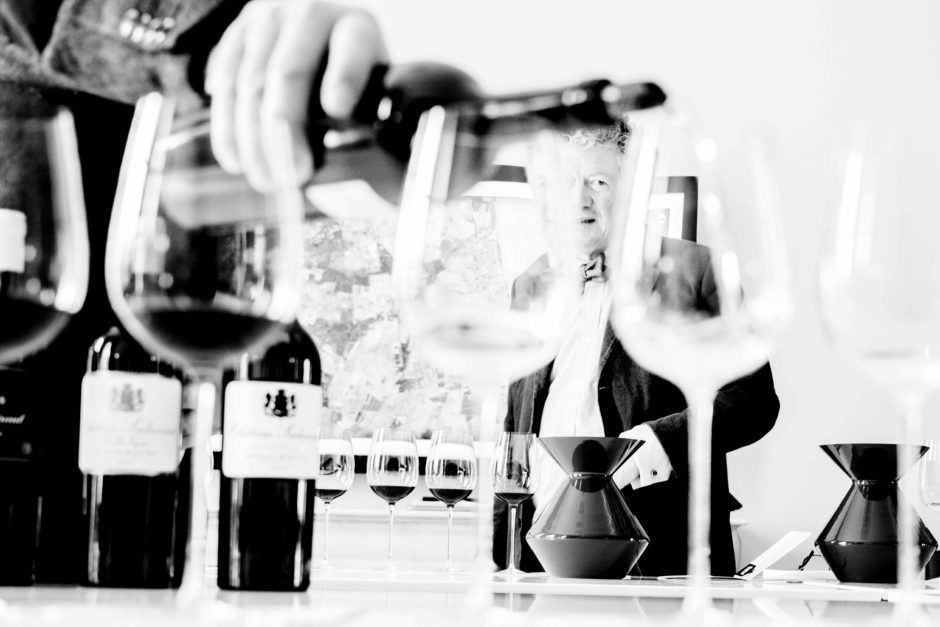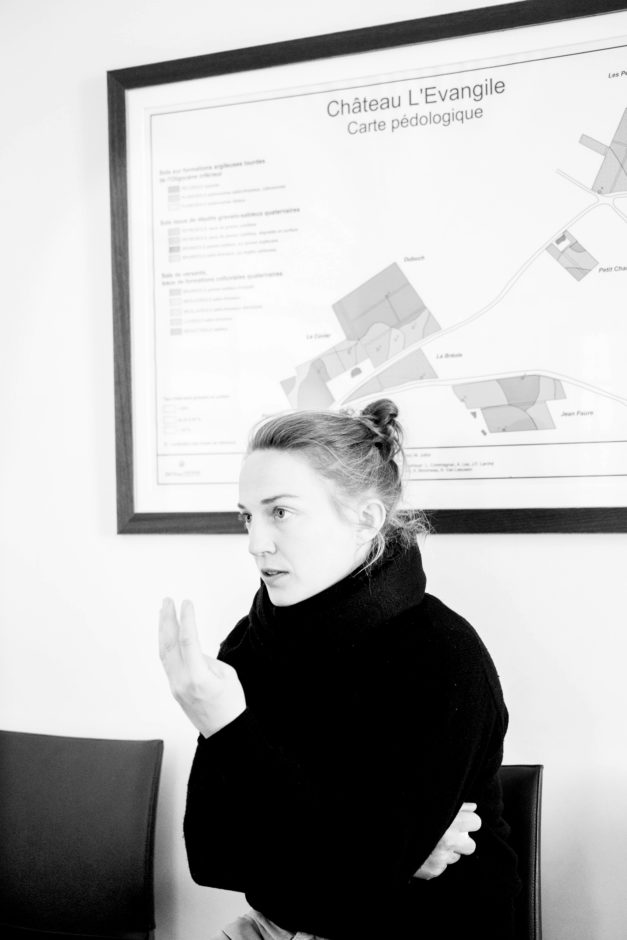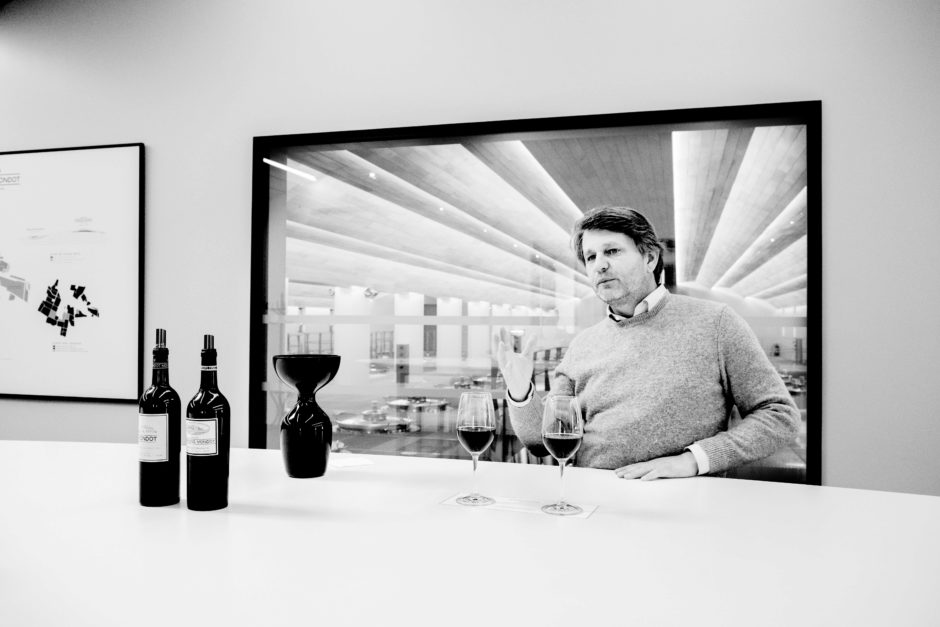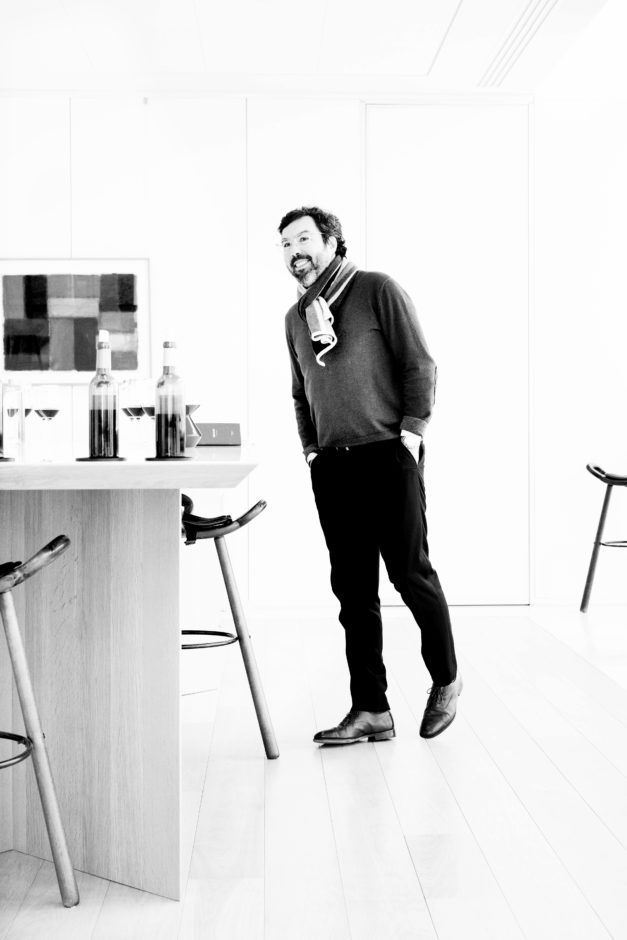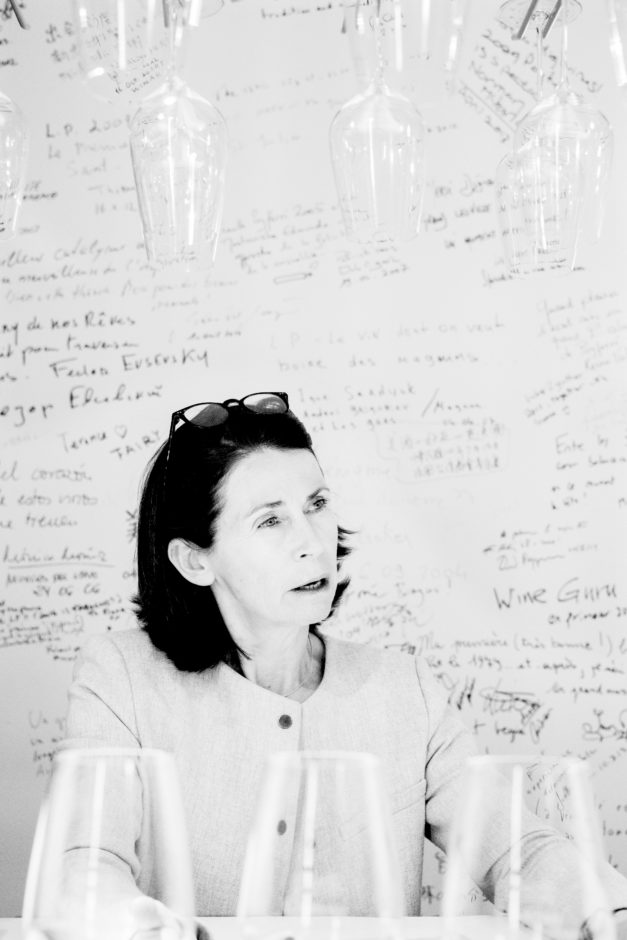18th May 2022
Finally, just over one year after that ominous first frost plague descended upon the Bordeaux 2021s, the 10th Plague arrived, far more terrifying and damning than all those that came before. The Scores.
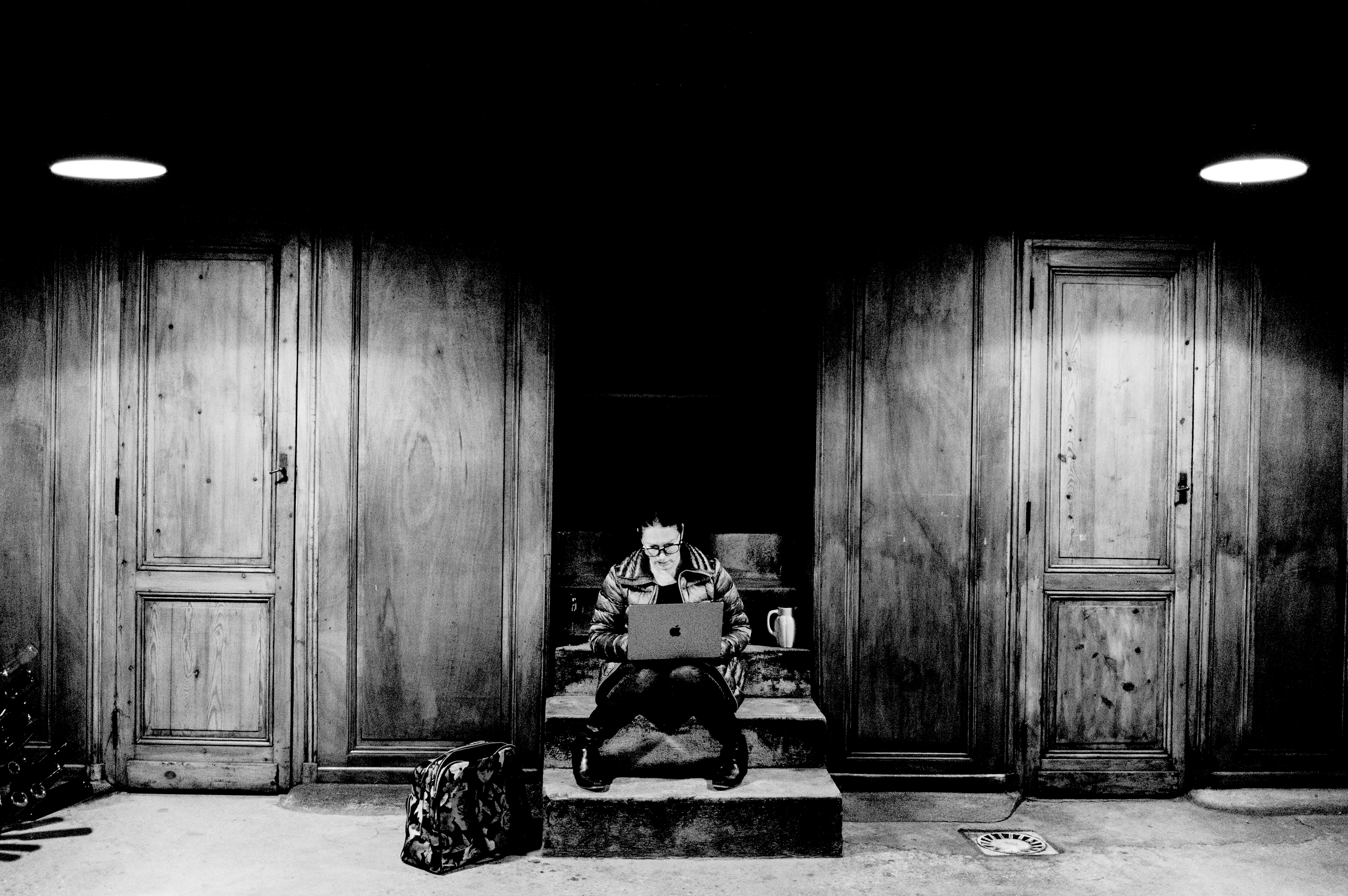
- Baptiste Guinaudeau, Château Lafleur"In 2021, numbers are very misleading. Looking at the numbers cannot tell you what the wine is like. Don’t look at the numbers."
Please Read This Before You Look at the Scores!
Not to apologize for how I have called the wines, but I want to make the vital point that scores in isolation can be misleading. A grade on a child’s test at school tells you nothing about their personality, only their performance on a specific task. Wine scores measure a wine’s quality performance for its style, but it does not describe its style. There could be a lot of wines from the Bordeaux 2021 that you may enjoy but which did not score very highly. It depends on your stylistic preferences, which is a consideration that sometimes supersedes the level of quality. Quality and style are two very different attributes. More on this later in the article.
So, with that out of the way...
There’s no such thing as a bad Bordeaux vintage anymore, right?
After a string of six great vintages—2015 through 2020—notwithstanding the slight frost blip of 2017, which produced many very respectable wines, this had become the prevailing assumption. 2018-2020 were particularly outstanding. Sure, this vintage hattrick was not without viticultural trials. Still, these were mainly isolated events or otherwise manageable incidences of frost, mildew, rains, heat, and drought, primarily affecting yields rather than quality. Many growers produced exemplary wines in these years, including some legendary examples. Quality has generally been very consistent over the unprecedented six-year stretch preceding 2021, to the extent that a sense of hubris had begun to set in amongst the Bordelais/Bordelaises. There has been a prevailing view that whatever Mother Nature threw at growers, with modern viticulture and winemaking, she could be conquered.
Then, along came 2021.
Those following the 2021 vintage in Bordeaux will know that the growing season was a harrowing series of disastrous natural events. The number and scale of blights that rained down upon Bordeaux that spring, summer, and autumn was on a Biblical scale. OK, that’s a slight overstatement, but Mother Nature did unleash a series of seeming plagues on the region, putting Bordeaux’s winemakers’ faith in modern viticulture to the ultimate test.
The 2021 Bordeaux Growing Season in Eight Plagues
2021 started benign enough with a relatively mild winter, leading to an early bud break towards the end of March and the first week of April. While a precocious bud break can provide a much-needed jumpstart on the season, it also carries a risk well-known to the Bordeaux winemaking community.
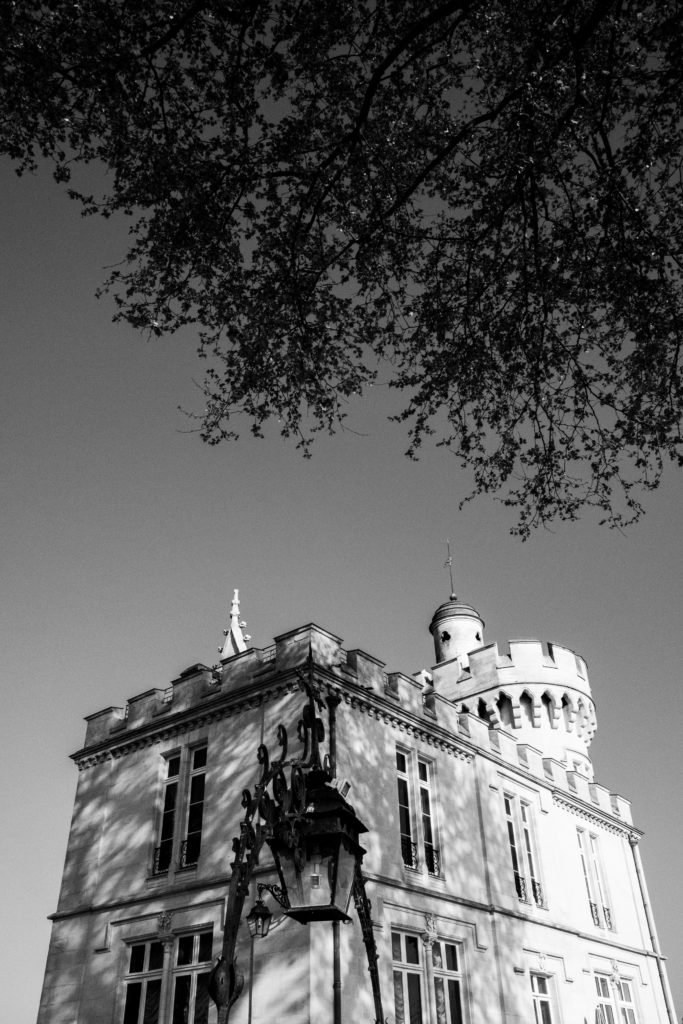
The First Plague: The Frost
On April 7th and 8th, evening temperatures dipped well below freezing across all of Bordeaux, hitting -5 degrees Celsius / 28 degrees Fahrenheit in areas, exposing burgeoning shoots to crippling frost on a par with episodes in 2017 and 1991.
As is usually the case with vineyards hugging the Gironde in the Médoc, the frost caused minor crop loss in this area. Château Margaux reported a slight crop loss and only on their inland vineyards (not destined for the grand vin), as did Ducru-Beaucaillou. Further inland in Margaux, Giscours lost about 7% of their crop to frost. Palmer told me the frost impacted 8 hectares, mostly the Alter Ego Merlot. Fourcas Hosten in Listrac estimated that they lost 50% of their crop to frost.
Pessac-Leognan took a significant hit. Pape-Clement lost about 30% of its crop during the April frost. “The frost was different than 2017,” commented Véronique Saunders from Haut-Bailly, towards the southern part of the region. “It was a little bit everywhere. Frost losses were about 30%, and then we lost crops to mildew. In the end, our yields were 19 hl/ha.”
Areas of Sauternes, Barsac, and the Right Bank got slammed. Some producers, such as Château Climens in Barsac, were completely wiped out of the 2021 race at this first hurdle. “In Sauternes, the frost was much more severe,” said Christian Seely, CEO of AXA Millésimes (owners of Suduiraut in Sauternes as well as Pichon Baron and Pibran in Pauillac). “It really affected us in 2021. Our yields were a minuscule one hectoliter per hectare.”
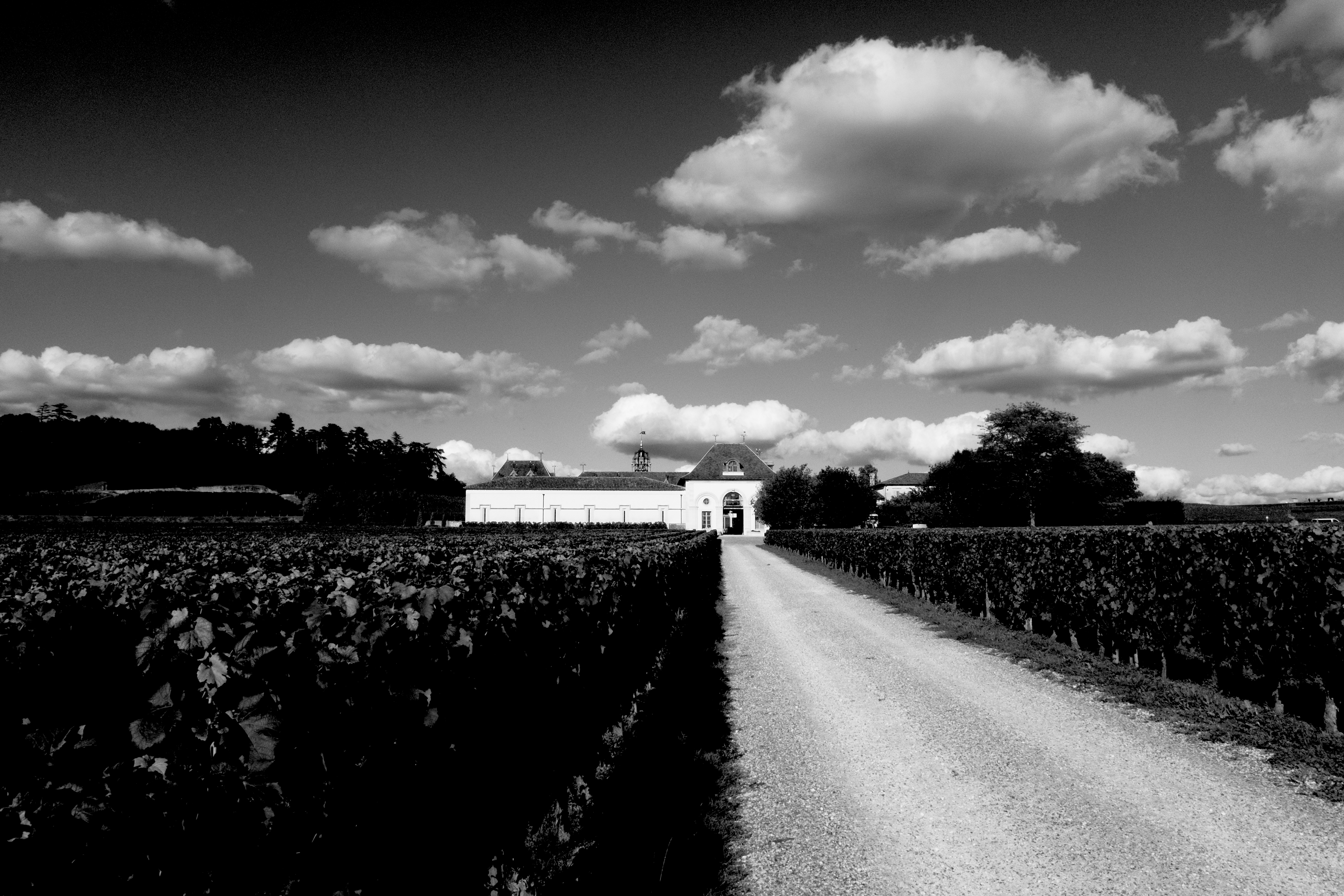
- Benjamin Laforet, technical director at Chateau Angélus"We have the tools to fight frost, hail, and mildew, but sometimes you forget that you cannot fight against nature."
“Frost was the first big challenge in 2021,” said Baptiste Guinaudeau of Château Lafleur in Pomerol. “We did ten nights of frost protection. In the end, we had very little damage.”
Others were less fortunate. At Monbousquet in Saint-Émilion, yields were down to around 18 hl/ha due mainly to frost. They eventually had to drop the fruit from the secondary buds because it wouldn’t have a chance to ripen. Clos Cantenac lost about 50% of their crop.
“We were ahead of ourselves in 2021 when the frost hit,” said proprietor Jonathan Maltus of Maltus Estates in Saint-Émilion. “Then the frost slowed the vines right down. We lost about 70% of the crop on the plain in 2021; around Le Dôme, we lost about 20%. Because of this, it was a late harvest. There was uneven ripening, so it became a balancing act when it came to picking dates.”
As Maltus alluded, the frost not only wiped out some of the crop, but it shocked the surviving vines, reversing the lead they had been enjoying to a lag. To make matters worse, even in many areas that did not lose much discernable crop, it threw the ripening pace of the vines into disarray, and uneven ripening suddenly became a signature of the vintage. So, already growers suspected that vineyard management and the harvest this year would be a pain in the you-know-what.
The Second Plague: The Deluge
May turned cold, cloudy, and very, very wet, with fewer sunshine hours and nearly a third more rainfall (116 mm for the month recorded from Mérignac) than the average for 1991-2010, which doesn’t even include the last decade of warmer, sunnier vintages. (Based on data from Météo France.)
Frost was reported in areas on the 2nd and 3rd of May, causing further damage in a few places. After the frost, the cool, rainy conditions slowed vine growth and delayed flowering, which was one week later than average, resulting in some coulure cases (also known as shatter or poor fruit set), generally caused by cool weather during that period). Coulure further reduced potential yields, which were already lower in some cases because of the frost.
Coulure was also reported at Pichon Lalande and Léoville Las Cases and areas of Pomerol and Saint-Émilion, mainly affecting the Merlot.
The Third Plague: The Mildew
Into June, temperatures began to rise around Bordeaux, but the rain didn’t stop. There were isolated incidences of hail, further reducing yields for some. However, the more significant threat was from a too familiar foe in recent years: downy mildew. After the great mildew bloodbath of 2018 and recurring incidences in 2020, the dreaded fungal pestilence returned in 2021 with a vengeance. By the beginning of July, soggy, humid conditions and rising temperatures throughout Bordeaux amounted to a dangerous cocktail for rampant outbreaks.
Downy mildew was wreaking havoc throughout Bordeaux by mid-July, and no terroir or level of classification was immune. As usual, it was especially tough on those using organic or biodynamic methods.
“May, June, and until the end of July were very wet,” said Château Latour’s winemaker Hélène Genin. “We tried to protect from mildew with the copper, but it was difficult. We are only allowed to use 4 kilograms per hectare for organic viticulture, and we try to limit ourselves to 3.6 kilos per hectare. On top of this, we couldn’t use tractors when it was so wet because they could cause soil compaction. We try to have grass and legumes on the soils to limit compaction, but some of our soils are too gravelly for growing these in between rows. Our yields this year were 23 hectoliters per hectare. We hoped to do better. We were very clean until the beginning of July, but then we had a lot of mildew.”
“The problem arrived in June,” said Lafite’s technical director, Eric Kohler. “We had more than 150mm of rain. And we had 70mm in July. We experienced a kind of permanent humidity then—the mildew was strong and very present. We are now in organic conversion. It is difficult to evaluate how much of the crop we lost, but we estimate that we lost 10% to mildew. It is like that when you want to be organic. It was a fight, but we considered it a success to have lost only 10%.”
The Fourth Plague: The Cicadelles
Not exactly a plague of locusts but an equally unwelcome menace, cicadelles are a type of leafhopper. They damage the leaves by sucking out the sap, which can cause leaves to turn brown and shrivel, therefore impacting ripening. Equally concerning, these pesky pests sometimes harbor far more sinister long-term effects since they can spread vine-threatening diseases such as flavescence dorée.
I heard reports of leafhopper outbreaks in 2021 in Pessac, Pomerol, and Saint-Émilion, including at La Pointe, La Conseillante, and Canon, where the pests were treated by applying talc (talcum powder) to the leaves to deter feeding.
The Fifth Plague: The Sunless Summer
Sunshine hours for July were down significantly from the 1991-2010 average, 197 hours in 2021 vs. 249 hours over that twenty-year period, according to Météo France data reported by Professors Laurence Geny and Axel Marchel in their annual report, The 2021 vintage in Bordeaux.
“Overall, temperatures in July 2021 were 1 to 2 degrees C below the seasonal average with a 10 to 15% sunshine deficit,” commented Geny and Marchal in their report. “Rainfall was spread out over the first two weeks of the month, increasing the threat of vine diseases, in particular mildew on grape bunches.”
Before long, the warm, cloudy conditions caused the already omnipresent downy mildew to spread like wildfire through the vineyards.
“Veraison was so long. It took one month,” said Juliette Couderc from L’Evangile. “The soil was waterlogged coming into August. The ripeness of the berries was lagging.”
According to Geny and Marchel’s report, mid-veraison did not occur until the 11th of August in 2021, 5 days later than the average for 2000-2020 and 10 days later than 2020.
“The maturity took a long time to happen,” said Pierre-Olivier Clouet from Cheval Blanc. “The temperatures were very low. It took 60 days between veraison and picking, when usually it is around 40 days.”
By August, growers could see that it was going to be a late harvest at the rate the berries were tracking. “Changes were very slow in terms of ripeness,” conceded Frederic Faye, managing director of Figeac. “It was a cloudy vintage. We couldn’t harvest when the rain was forecasted on the 2nd and 3rd of October. The grapes weren’t ripe. We could have made red wine, but we could not have made Figeac. So, we had to wait for the ripeness.”
The Sixth Plague: The Drought
From about the third week of July, the rains dried up, not a minute too soon for those exhausted by the war against mildew, which was pretty much everyone. But it wasn’t long before the deluge had developed into a water deficit. While June had received more than double the rainfall than the average for the period of 1981-2010 (again, that era before the hot, dry, most recent decade), July’s rainfall was below average, and most of the precipitation had been received in the first three weeks of the month. When Mother Nature turned off the tap from mid-July, the sodden conditions were followed by nearly six weeks of drought, the effects depending mainly on location and terroir.
“Despite the significant soil water reserves and low temperatures, hydric stress started to show on the Enclos at the end of August,” reported Château Latour. “Unfortunately, the poor weather continued into September, and a further 77mm of rainfall encouraged the development of botrytis.”
The Seventh Plague: The Botrytis
September came in warmer than average and turned damp to downright rainy by the middle of the month in some parts of Bordeaux, creating the perfect conditions for botrytis. Pauillac and areas of the northern Médoc received more rain in mid-September than other areas, nearly 80 mm in parts, whereas Saint-Émilion received around half that amount. Consequently, most producers in the Médoc mentioned botrytis in the approach to harvest as a severe issue, whereas on the right bank, outbreaks were less severe.
“Fortunately, the end of August was very dry with a little hydric stress,” said Château Latour’s Hélène Genin. “Then in September, we had humidity, so we had botrytis. So, it was hard work to sort the bunches. It was hard work in the vineyard and the sorting room. It was challenging for the sorting room to keep up with the grapes coming in. There was a lot to sort; it was long and hard work. We had to sort each and every box. For the future, we are looking for new sorting tables that will have two levels to handle such situations. There were a lot of dried berries (from the mildew) and botrytis. Perhaps I am too strict—I wanted no botrytis. This year we had to add sulfites.”
The Eighth Plague: The Mistaken Augur
Some blamed it on fewer planes flying than usual, impacting the weather forecast accuracy; others had just resigned themselves to the capriciousness of the meteorological beast. Whatever the case, predictions called for a 70% chance of significant rain on the 2nd of October 2021 and 90% on the 3rd of October, with showery conditions continuing into the following week. Expectations were for 90mm or more. In the end, only around 7mm fell in parts, but the damage from the mistaken augur had already been done.
I heard this kind of comment a lot. Personally, no one picked very much before that first weekend in October when the deluge had been predicted, but the neighbors did. Right. The quoted harvest dates by Châteaux can be misleading. For example, wineries might report that they harvested from the 27th of September to the 7th of October, but they are less clear about what percentage was harvested in September vs. October.
But even those growers that called the meteorologists’ bluff and didn’t pick before the forecasted rains on 2nd and 3rd of October had to pick soon after. Botrytis was still spreading throughout the bunches and, an equally important factor, most of the vines throughout Bordeaux had had it by then.
“To admit, at the time, it was all a little bit of a nightmare, and we thought it would be a disaster,” said Philippe Blanc, managing director of Beychevelle. “The disease pressure was huge. In the end, I don’t think the vines could have gone further. There were no leaves.”
“When bunches started to mummify, we had to start harvesting the Merlot,” said Frederic Faye from Figeac. “We needed to maintain the freshness of the fruit.”
“We had to be strategic about harvest,” said Edward Kressmann at Latour-Martillac. “We had to manage the botrytis so that it didn’t take over.”
As previously alluded to, the ensuing 2021 Bordeaux harvest was a war zone wherever you looked. Like casualties coming in from the front line, blocks needed to be prioritized according to the condition of the berries—how badly the bunches had been impacted by mildew and botrytis. The sorting job seemed endless. But after the usable crop had been separated from the chaff came the million-dollar question: Were the grapes ripe? Before calling out this elephant in the room, let’s discuss winemaking.
Winemaking & The Ninth Plague: The Dilution
"My concern at the beginning was ripeness, but the problem was dilution in the end."
- Stéphane Derenoncourt, Consultant Oenologist
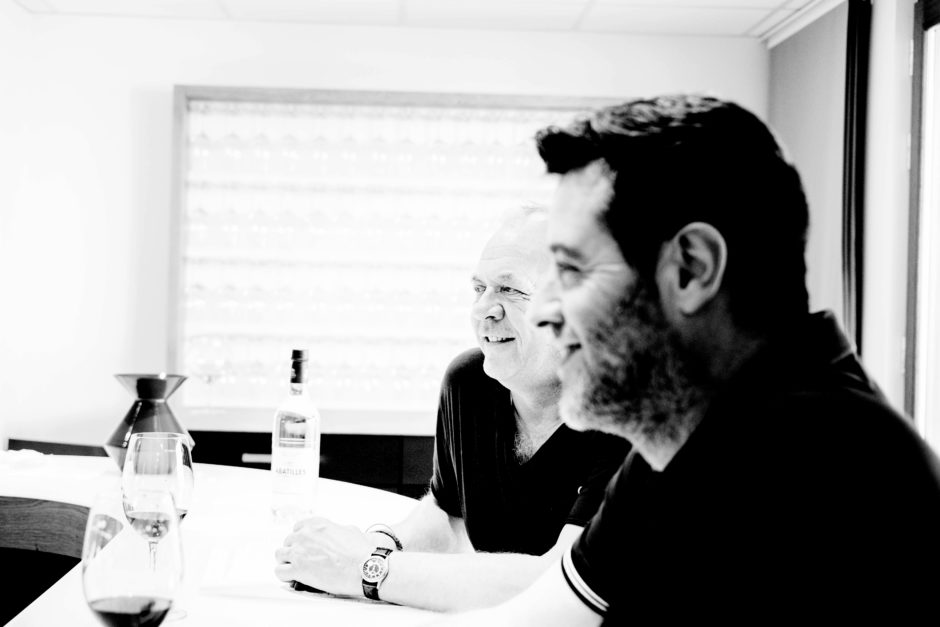
While ripeness was a massive concern to winemakers, the pressing problem as grapes came into the winery was dilution. Most of the winemakers I interviewed were refreshingly up-front and frank about this situation.
“In mid-September, we had a big rain,” said Philippe Bascaules, managing director at Château Margaux. “We had 45 millimeters, which is a lot of rain at once at this time of the year. We picked from the 24th of September through the 17th of October. We had some big berries, so we did some saignée. Usually, we do 0-10% saignée, and this year we did up to 20% saignée on the Merlot.”
“We chaptalized the Cabernet Sauvignon, and we performed saignée on all the Merlot but no chaptalization,” said Jean-Philippe Delmas at Haut-Brion. “For sure, it is a Cabernet Franc year. I’m not sure if it is a Cabernet Sauvignon or Merlot year, but the Cabernet Franc was great. There was no stress or issues with the Cabernet Franc, and we had enough time to wait for the ripeness.”
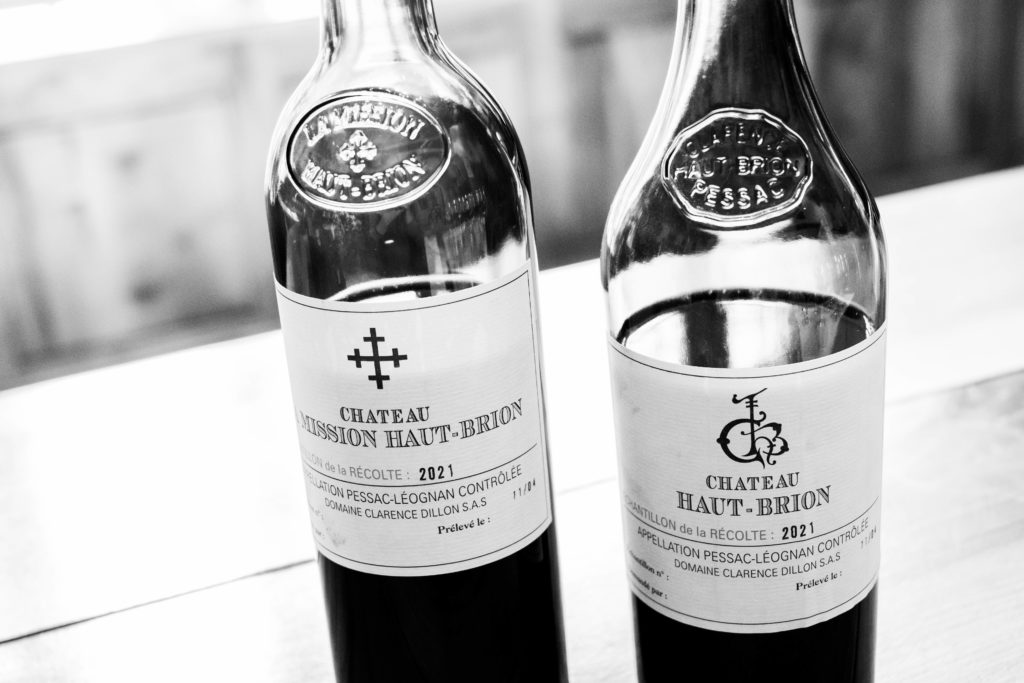
“Our Merlot was at 12.5% potential alcohol,’ said Matthieu Bordes of Lagrange (Saint-Julien). “So, we decided to bleed the vats. And we did reverse osmosis instead of chaptalization. It was the first time we used the machine since 2014.”
“On the sandy soils, the water can be too much or too little,” said Marielle Cazaux from La Conseillante. “These berries were very big, so we had to do what we hadn’t done in years: saignée.”
“We did saignée on the Merlot,” said Frederic Faye from Figeac. “And we only chaptalized one vat of Merlot. The Merlot came in at 12% alcohol.”
Regarding dilution, the Merlot was the big problem; excuse the pun. At Lagrange (Saint-Julien), the Merlot was 2 grams per berry, when normally the berries are around 1.5 grams. At Cheval Blanc, Pierre-Olivier Clouet informed me that their Merlot berries are usually about 1.2 grams, and in 2021 they similarly came in at around 2 grams, requiring “some bleeding.”
But not all winemakers agreed with the saignée method of dealing with dilution. “If you have perfect tannins, saignée works, but if you don’t, it can be risky,” said L’Evangile’s Juliette Couderc. “We didn’t want aggressive tannins.”
“We chaptalized to 0.3 or 0.4 % alcohol,” said Olivier Berrouet at Petrus. “But no saignée. The problem with saignée is that you extract the first juice richer in sugar. Our berries were small this year—not as small as the previous years, but not too large. The goal was to pick at the right moment. We got to the point when waiting longer wouldn’t have brought anything.”
“Wow. Saignée? No!” said Lafleur’s winemaker, Omri Ram, speaking of their famous Pomerol vineyard. “That’s like...resuscitating someone and leaving them with brain damage. No. We had the same weight per berry in 2021 as in 2015. We had water stress! The vegetation stopped for us when we got to the drier part of the season. The gravel here is so naturally draining. Our Merlot berries came in at 1.4 grams. This is average for us; we are always 1.1 to 1.4. You needed to trust the job you did in the vineyard during the growing season and not adjust in the winery. We already knew what we had and what we needed to do. Mineralizing the soils early helped to get the vines going early. We believe that August must be closer to October than June in the cycle.”
“In the winery, the challenge was to find the right extraction level,” said Vincent Millet, technical director of Calon-Segur. “The extraction was gentle, and then we added some power with the press wine addition. We worked very hard to find the right amount of press wine, and in the end, we used about 12%.”
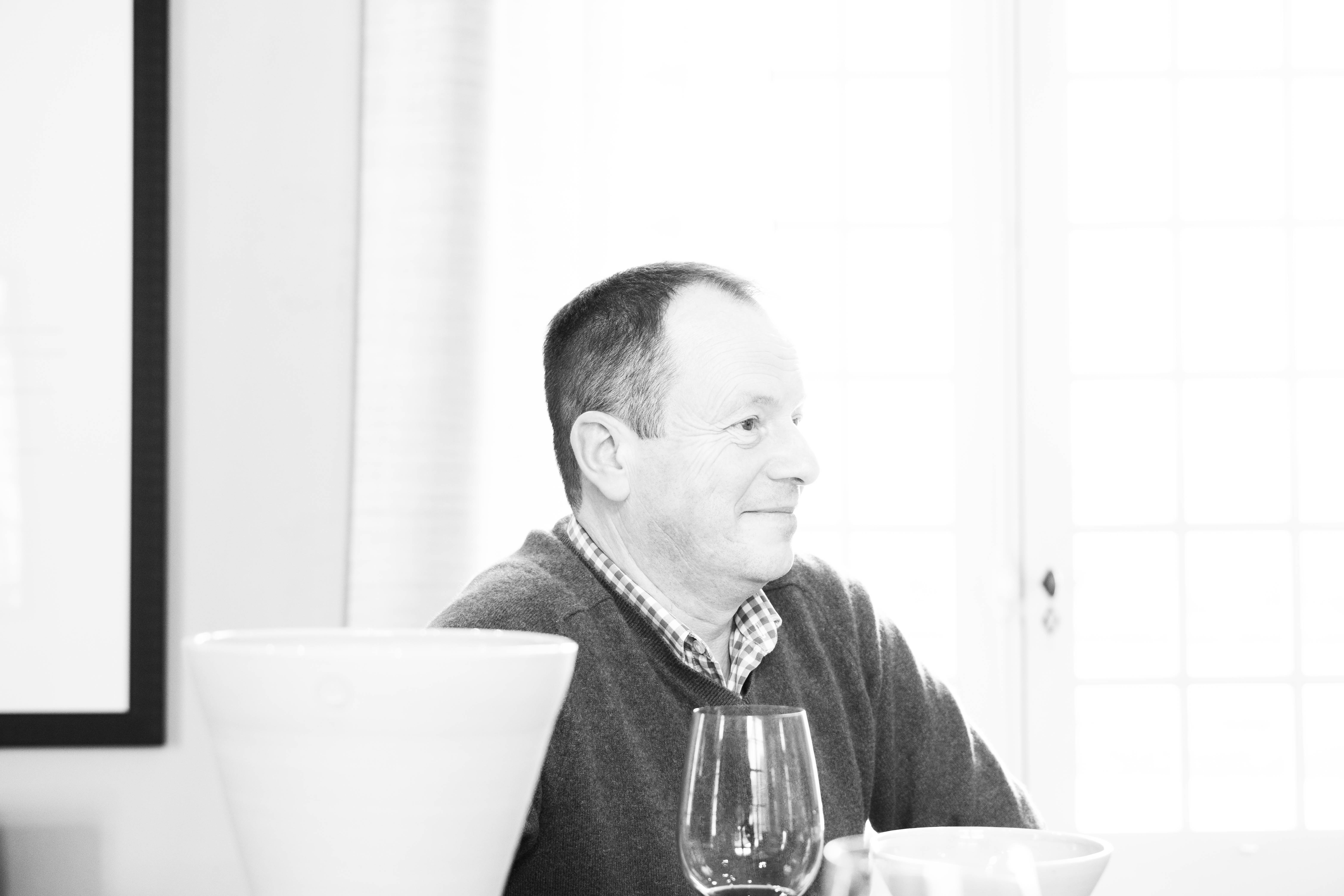
Apart from obvious changes to standard Bordeaux winemaking such as plans to use less new oak and perform less racking because of the delicate nature of the fruit, the other major winemaking departure from the norm in 2021 was that most winemakers went super-soft on the extraction.
“We had to be very careful with extraction,” said Berrouet from Petrus. “You can lose the balance, even if you go a little too far.”
“Our infusion was very soft,” echoed Juliette Bécot of Beau-Séjour Bécot.
“We went very soft on vinification,” said Hélène Garcin-Leveque, owner of Barde-Haut and Poesia in Saint-Émilion and Clos L’Eglise in Pomerol. “We didn’t want to over-extract. The whole idea was to respect the fruit.”
This aim for a lighter touch to achieve approachable, less aggressive tannins is backed up by what I found in most of the wines I tasted. It appears this gentle approach was necessary because, in the overwhelming majority of 2021 wines, the tannins are not completely ripe, which brings us neatly to the next topic for discussion.
2021 Ripeness, Quality, and Style
- Pierre-Olivier Clouet, technical director at Cheval Blanc"This is a completely new profile of vintage. The tannins are a touch al dente."
Ripeness
Back to the elephant in the room: Ripeness. Were growers able to achieve ripeness in 2021? Since full ripeness is largely down to four major components—sugars, acids, aroma/flavor compounds, and phenolics (color and tannins)—we will need to consider them individually and how shortcomings were managed.
1) Sugar
Was sugar ripeness achieved in 2021? Considering that most Bordeaux reds aim for a balancing alcohol level (one that will contribute the desired weight and mouthfeel) of 13-13.5% and that a lot of the berries came in with a potential alcohol of 12-12.5%, mostly not. But winemakers can directly address this shortcoming with chaptalization, and it can also be indirectly corrected with saignée or must concentration, but not without a trade-off.
2) Acids
Most growers reported unusually high levels of malic acid in the grapes at harvest, which is usually an indicator the berries were under-ripe. (The ratio of tartaric to malic acid increases as berries ripen.) However, the final pHs of the wines are relatively high for the acid levels. (High pH usually correlates with lower acidity.) The higher pHs are a consequence of the increased amount of malic acid that was converted into softer lactic acid, causing the pHs to increase. Nonetheless, the vintage has produced wines with relatively high acidity for their weights and intensities.
3) Aroma/Flavor Compounds
In the distant past of Bordeaux winemaking, aromas and flavors were considered ripe as soon as pyrazines (green/herbaceous compounds) in the berries had dropped to an almost undetectable level. It was good enough if the wines didn’t profoundly smell of tomato leaves and taste like bell peppers. Nowadays, most consumers are looking for a bit more than good enough, especially from top names and when paying premium prices. Fully ripe grapes should not only not be green, but they should also have developed a broad, complex range of flavor compounds that can be linked to their varieties and terroirs. Most of the 2021s do not possess such flavor ranges. While there are very few full-on bell pepper laced wines, I did pick up a good many with a faint character I call tomacco—a mix of tomato leaf with tobacco (the name coming from a Simpsons episode where Homer breeds a tomato plant with tobacco using plutonium). Otherwise, simple red and black berry flavors with a faint herbal undercurrent are what can generally be expected.
4) Phenolics
Al dente. While I hate adopting wine marketing euphemisms, Pierre Olivier Clouet’s term is an excellent description of the best quality tannins produced in this challenging vintage. In other words, slightly under-done and chewy. I think this style works better on pasta than grape tannins, but it’s not entirely unpleasant. Al dente is the best-case scenario in the 2021s. The worst tannins are downright rough and were mostly well-managed with very light extraction in the cellars. Mostly.
So, you may wonder, given all the plagues of the growing season, how could anyone achieve anything close to sugars, acids, flavors, and phenolics ripeness in 2021?
Apart from relentless mildew fighting measures and employing a multi-staged, highly intuitive harvest strategy with the means and lack of financial considerations to employ painfully strict sorting, I’ve found that the three variables contributing to the few genuine successes that have come out of 2021 were:
1) luck of location when it came to frost, hail, amount of rainfall, etc.,
2) soil profile (especially the soil’s water regulation abilities), and,
3) yields.
Yields. Lower yields don’t always play a significant role in quality, but they did in 2021 because, given the cooler, rainy conditions and overall lack of sunshine, there was only so much crop that the vines could ripen.
“We are very convinced here that low yields were the key factor to achieving balanced vines,” said Palmer’s CEO, Thomas Duroux. “We had one old block with high yields (45 hl/ha) where the quality was not so good. When we had lower yields, we had more mid-palate and ripeness. The small crop was the key. Lower yields, top terroir (free draining), and older vines gave us great quality. Our final yield overall was 27 hl/ha.”
“Yields were low—34 hectoliters per hectare,” said Jean-Charles Cazes of Lynch Bages. “But I believe the low yields were key to getting the grapes ripe.”
“The mildew actually did us a favor to lower the yields in order to ripen this crop in the cooler vintage,” mentioned Benjamin Laforet, Technical Director at Château Angélus.
Indeed, Mother Nature naturally lessened some crops with frost and mildew impacts (especially those fighting with only organic or biodynamic weapons such as Palmer). Still, some growers, especially conventional (non-organic) ones, managed to bring in some generous yields that would have been impossible to ripen. There were quite a few reports of yields from top Châteaux coming in at 45 hl/ha or more. And it shows in those wines.
Quality
In summary, in 2021, quality is variable across the Bordeaux red wines. Dilution and under-ripeness were omnipresent regardless of variety or commune, but Merlot suffered more from dilution, and Cabernet Sauvignon suffered more from lack of ripeness. Winemakers had the means of dealing with a certain amount of dilution using saignée and reverse osmosis. And while ameliorations are available, such as adding oenological tannins, for the most part, flavor and phenolic ripeness cannot be “made” in the winery. True, a proportion of a riper vintage such as 2020 can be added to barrel samples and final blends. And I do not doubt that this was the case with some of the barrel samples I tasted. After all, if something looks too good to be true, yadda, yadda. But legally, winemakers can only add 15% of another vintage, and, when it comes to the final blends, why would they add 15% of a more valuable vintage to one that was and will always be a difficult sell?
Style
The 2021 red wines are quite a stylistic departure from recent vintages and may well be just what you are seeking. Or not.
Stylistic preferences aside, the extreme nature of the vintage conditions has undoubtedly put a distinct imprint on the style of the reds, in most cases blurring the terroir signatures, rendering many wines with a somewhat disappointing sameness. This lack of diversity is mainly due to the under-ripe tannins and under-developed flavor compounds. Many 2021 reds are light to medium-bodied with lower alcohols (most chaptalized up to 13-13.5%). They are soft, uncomplicated, red fruit-dominant wines destined for earlier drinking. Most will be at their peaks in under ten years and will likely not last beyond two decades or certainly not improve with time in the bottle beyond this.
At the pinnacles of quality, the 2021s are refreshing, elegant, savory wines with lower alcohol and light to medium-bodied. The best wines have well-sustained mid-palates and finishes. The tannins are currently a touch “al dente,” to borrow the phrase of Pierre-Olivier Clouet at Cheval Blanc. Still, these should turn sufficiently powdery at peak maturity to provide that necessary textural sensuality to match the delicate flavors.
At worst, lean, mean, two-dimensional, “tomacco” (tomato leaf + tobacco) tinged Bordeaux 2021s will soon be hitting the markets. Poorly managed dilution has left many of these wines with hollow mid-palates and short, disappointing finishes, and they are likely to fall over in just a few years.
Many winemakers were quick to compare 2021 with 2014 or maybe even 1996, 1999, 2001, or any perfectly respectable second-tier vintage, but not 2013. Anything but 2013. Still, the more I tasted the 2021s, the more I was reminded of the 2013s. Granted, 2013 was a notoriously difficult vintage, but not all 2013s are disappointing. I pulled a 2013 Ducru-Beaucaillou from my cellar last week. It was delicious and drank very well now. It wasn’t overly complex, but it was well-balanced, elegant, and refreshing—just what I was in the mood to drink.
The 10th Plague
Again, We Arrive at the Scores
Just as a person’s nature cannot be measured or scored, neither can a wine’s style be scored. Sure, we can measure the weight of the wine and tell you whether it is light, medium, or full-bodied. We can tell you the alcoholic strength, the primary grape variety, the level of acidity, and describe the texture of the wine. But these attributes alone do not make it a high- or low-quality wine. These features must be described in the tasting note, and we have done our best to make them searchable with extra filters.
This is all to say that on any given night, you may well enjoy the experience of drinking an 85-point wine more than a 95-point wine because the lower scoring wine better suits the style you are seeking on that occasion. It’s what suits your mood. In this respect, understanding the style of the wine is far more important to managing your experience expectations than choosing a wine based entirely on the score.
85 is Not a Bad Score
As a reminder, wines scoring 85 and above are good quality examples of their style. An 85-point wine may not change your world, but it can give you a lot of pleasure if it suits your style. I drink a lot of 85 to 92-point wines because they tend to suit my budget for everyday drinking better. This takes us to the most crucial consideration when considering buying the 2021s: Value. I expect to find value in the 85 to 92-point score range. When the 2021 Bordeaux offers come through, readers will most certainly want to consider value (quality for the price) right alongside intrinsic quality (scores) and style (searchable through our filters and tasting note descriptions).
Scores Below 80
Many critics will not give or publish scores below 80. I won’t speculate on the possible reasons for this but will clarify that we do not write for wineries. We work for consumers. And, like other critical publications, while wineries can purchase a commercial subscription to use our copywritten material for their marketing purposes, we are not a winery marketing publication masquerading as a consumer advocate.
I don’t specifically look to give low scores or nor am I out to crucify certain wineries. I feel that it is imperative for consumers to understand the entire breadth of quality that exists across the vintage, including specific examples. To only publish scores of 80 or above when a representative number of wines fall below this mark is misleading to consumers.
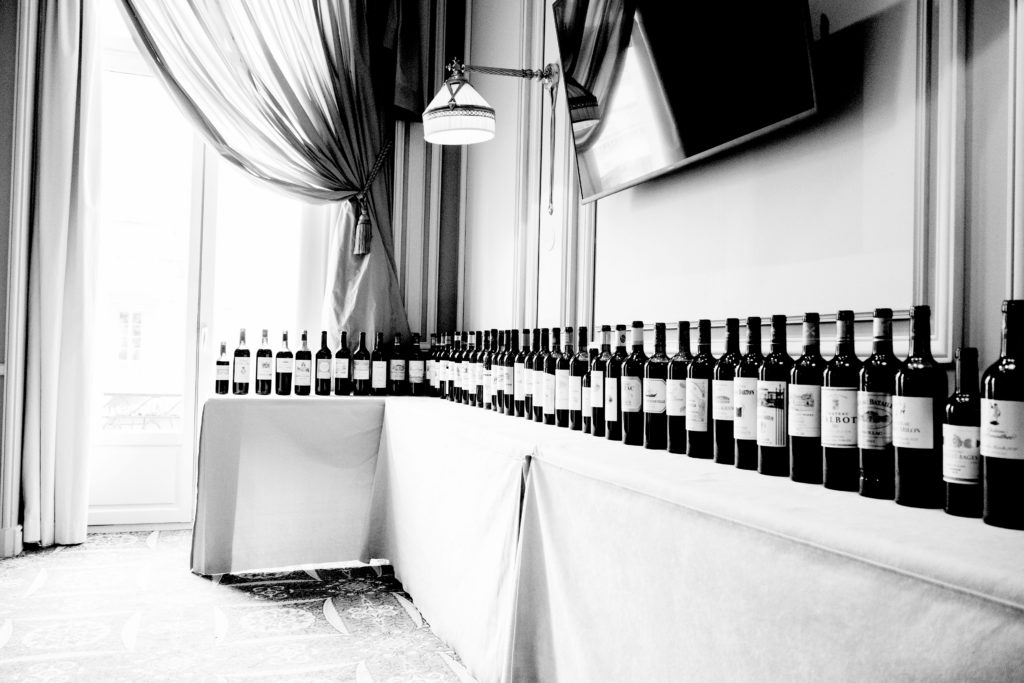
The Tastings
All the wines in this report were tasted in Bordeaux. In April, I spent three weeks in Bordeaux visiting wineries, working right through the weekends, conducting ten visits per day, and attending largescale tastings that allowed me to taste most wines at least twice if not three or four times. It was important to taste the wines multiple times this year, especially since many of the 2021-barrel samples I encountered were surprisingly unstable. If winemakers did not draw them on the morning of my tasting, I found many samples had already begun to oxidize and develop volatile acidity. This fragility was certainly not the case in the 2019s and 2020s, which I tasted from my home in Napa, CA, and raises another red flag about the vintage.
Many winemakers claimed the 2021s would gather weight and substance in barrel, but I doubt it unless they intend to blend a little (more) 2020 vintage into the wines before bottling. I’m anticipating modest aging potential for these wines. A few will go on to survive as much as three or maybe four decades. Still, in doing so they are likely to remain frozen in time with relatively simple savory characters that frankly do not have the necessary complexity to blossom into anything extraordinary. Most 2021s will be reaching their peak within ten years, and many will begin to deteriorate by the second decade in bottle.
Should you buy 2021 now? First, right off the bat, this is not an investment vintage. Buy 2018, 2019, or 2020 if you see a bargain and want to take a long-term investment position. If you are looking for drinking wines and you like the style of this vintage as I’ve described it, your decision will come down to price and relative value. I suggest you compare the pricing of the 2021s to that of the 2017s on the market. The 2017s are generally of a similar lighter, more elegant, fresher style, but the quality is more consistent. I intend to produce a 2017 retrospective report soon, so watch this space.
The 2021 Dry Whites
Dry white wines were only about 10% of total production in 2021, and more than half of this is Bordeaux Blanc sec. Generally speaking, the quality of the dry whites is better and more consistent than the vintage’s reds. The white grapes enjoyed a longer growing season than they did in the previous warmer vintages that necessitated earlier picking. Flavor compounds were nicely developed, and the wines are expressive, with plenty of crisp freshness that is well-balanced by the intensity of flavors. As with the red wines, the white wine alcohols are, for the most part, lower than in previous years, but not markedly so. All this said, there were just a handful of dry whites that truly wowed me. Furthermore, I would love to say that some of the best 2021 dry whites should be impressively long-lived. However, I’ve experienced several top Bordeaux white bottles in recent years that appeared to be suffering from premature oxidation, similar to the affliction of some white Burgundies since the mid-1990s. Therefore, I have been relatively conservative with my dry white drinking window estimations.
A dedicated report on 2019 Sauternes will be published next week. Meanwhile, I hope readers have found this report helpful. Happy Bordeaux Wine Hunting!
Credit to “The 2021 Vintage in Bordeaux” report by Professor Laurence Geny and Professor Axel Marchel in conjunction with V. Lavigne, E Guittard, N. Danede, and A. Rabot from the Institute of Vine and Wine Sciences of Bordeaux University, Oenological Research Unit, for some of the analytical data used to back up my observations in this article.
–
Article & Reviews by Lisa Perrotti-Brown MW
Photos by Johan Berglund
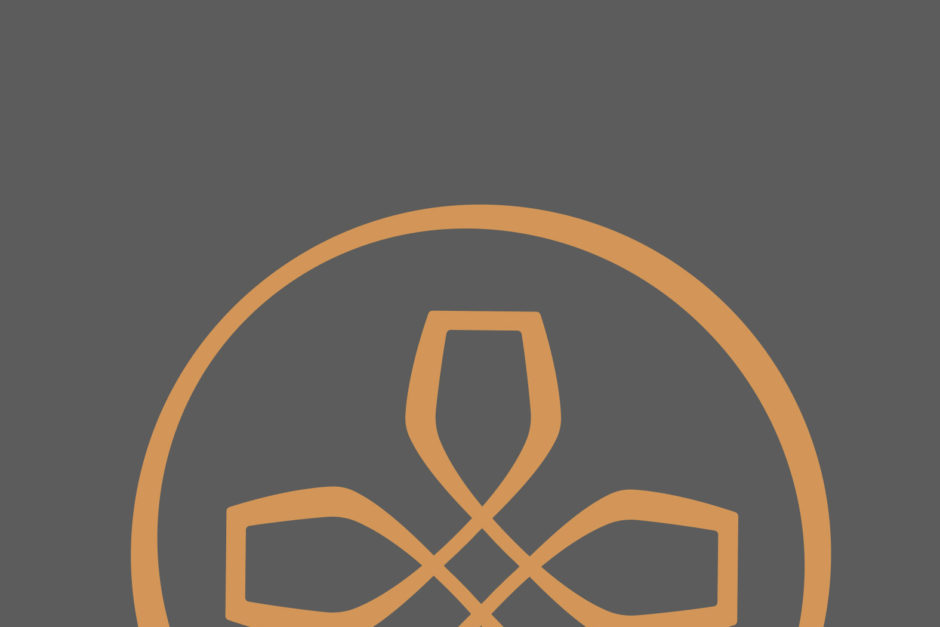
PRODUCERS IN THIS ARTICLE
> Show all wines sorted by scoreMore articles

Bordeaux 2023 Vintage Report and Reviews from Barrel
09th May 2024
649 tasting notes

Cathiard Vineyard New Releases
02nd May 2024
3 tasting notes
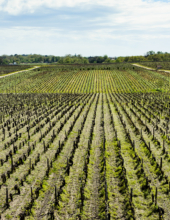
Bordeaux 2023 Preliminary Vintage Report and Reviews from Barrel
29th Apr 2024
56 tasting notes
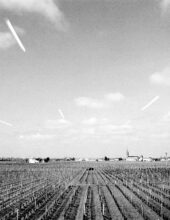
2021 Bordeaux in Bottle and A Modest Proposal
24th Apr 2024
599 tasting notes
Show all articles
